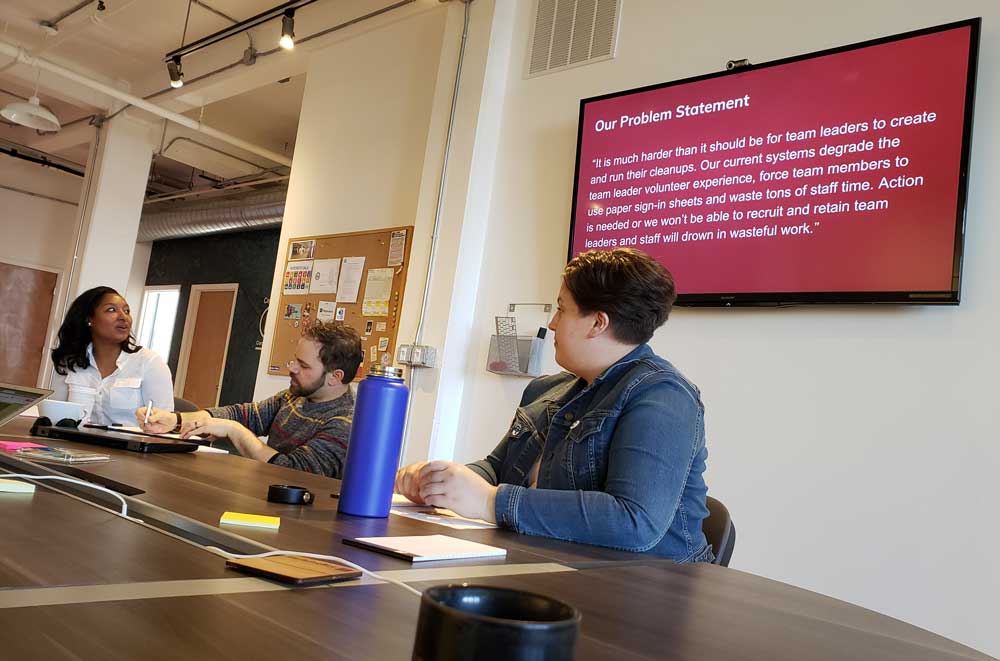
Design more effective solutions with problem-framing services from Mightybytes.
Problem Framing Services
Innovator Bias is a sneaky troll — rearing its ugly head, not just during ideation, but throughout the innovation lifecycle, often when you least expect it. At each step, some of the most fundamental truths come from a deep understanding of problems before solutions.
— Ash Maurya, Love the Problem, Not Your Solution
The most common reason new products, services, or programs fail is because the teams that create them didn’t appropriately explore the problem space before jumping into potential solutions. Here’s how Mightybytes helps our clients create better solutions to complex business problems.
What Problem Are You Trying to Solve?
Mightybytes’ problem framing services are executed with a seven-step process:
- Research, Preparation, and Planning: We ask probing questions about who has the problem, how they address it, and whether or not a solution exists.
- Writing Problem Statements: First, your team writes problem statements based on current information and assumptions. These address the problem, the impact, and assessing the urgency of the issue.
- Statement Mapping and Voting: Next, we map the statements according to impact, cost, and/or value. This fosters conversation about how best to address and prioritize the issue. It also gives the team better insights into the problem’s potential complexities.
- Stakeholder Mapping: This step focuses on how the problem impacts different stakeholders within your organization. Who does the problem impact in the most profound way? Who might be most likely to get involved with the solution? This step helps contextualize the discussions to come.
- Aligning Business Goals and User Problems: During this step, we define your business goals and the problems users or customers have. The best solutions often exist in the overlap areas.
- Defining Alignment: We draw connections between the organization’s goals and user problems, then identify areas where alignment occurs as well as how best to proceed.
- Problem Reframing: Finally, at the end of the process, we reframe the original problem statements. Each person reframes the problem based on what they learned, giving everyone involved a new way to view a problem and hopefully the potential solutions.
These exercises are facilitated in a virtual or in-person workshop setting to support faster consensus building and better collaboration.

When Might I Need a Problem-Framing Workshop?
As you start any new initiative, large or small, it is valuable for the impacted shareholders to clearly understand the problem you hope to solve. Here are several situations where a problem-framing workshop can be useful:
- You want to launch a new product, service, or program
- Your organization plans to move into a new market
- Your organization is hitting a snag when moving into a new market
- You want to know how a new business direction could impact stakeholders
Problem-framing workshops help teams orient around new projects with a deep level of understanding of the potential obstacles and insight into how each member of the team might be impacted by these shifts. When setting sail into uncharted water, it’s valuable to know the weather conditions and that is what this workshop seeks to arm shareholders with when making the journey into unknown business opportunities.
Most importantly, problem framing can help project stakeholders get on board with precisely which problem you aim to solve, why, and for whom.




